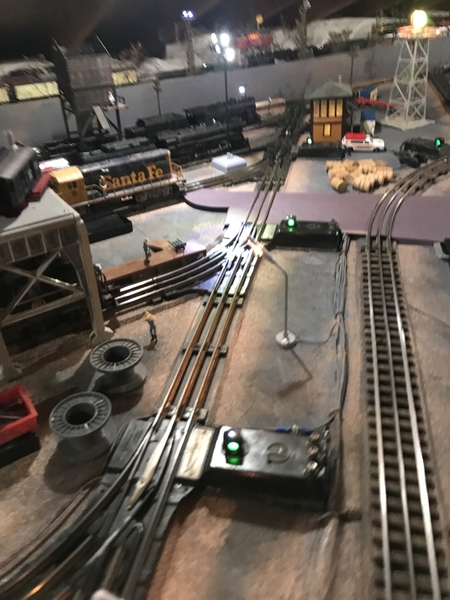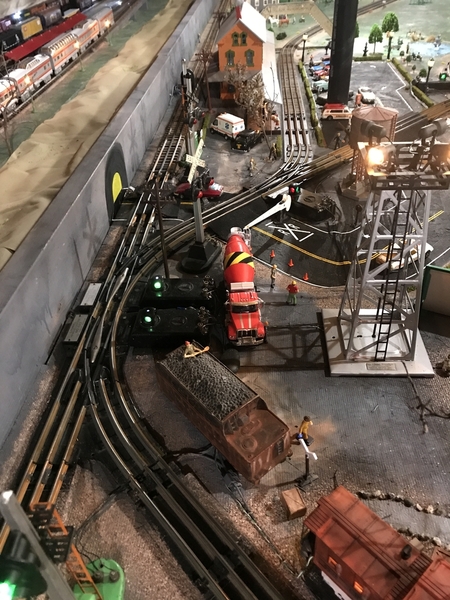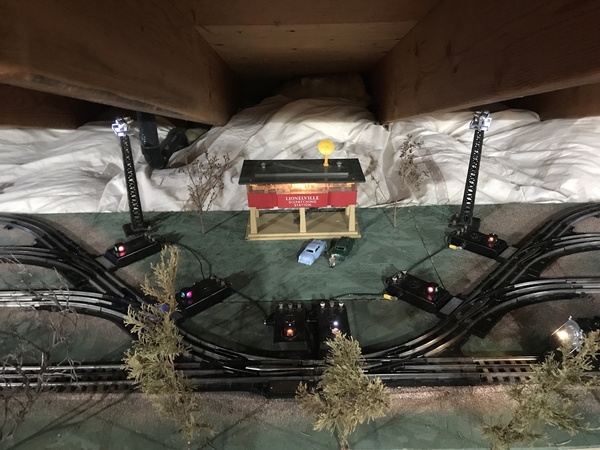I have always had small sized layouts, and always with 027 track. And to make those layouts interesting, I have always broken every track configuration rule, including multiple switches in a row and "S" curves.
Yet I have NO derailments. (I know that sounds like a brag, but it is true.) Even using the post MPC designed 027 turnout. Why?
It's the loose rivets (and sometimes screws) that hold trucks to car bodies. Grab the coupler and see if you can jiggle up and down. If you can, it's a loose mounting and a sure fire candidate for derailments.
When you're backing up a train through a complicated layout, all the pressure of the train going backwards is on the couplers - which are part of the truck assembly. So if you have a loosely mounted truck, that truck will work its' way upward on a "S" curve, a turnout or even a regular curve and then derail.
I've written this before and I've been doing this for years. I drill out the rivets on all rolling stock and replace it with in most cases, a truss head screw and a lock or stop nut. I tighten this all the way, then loosen it just enough for the truck to move to and fro. For some cars, like flats and gondolas, I'll use a pre-blacked hex or button top screw with the lock nut. Sometimes I'll go the trouble of painting the screw the same color as the car body.
For cars that have factory-installed screw mountings, I'll do some filing and grinding, to reduce as much of the truck wobble as I can.
And this effort has paid off. I seriously haven't had a derailment in years, including running backward thru all the wrong track configurations. This including light weight short MPC 8-inch cars pushing longer and heavier cars with die cast truck sets. No derailments.
Some folks add weight to their rolling stock. But now you're making your locomotive work harder, putting more wear on the motor. The only rolling stock I might ever add weight to (if necessary), are the ones with a roller pickup assembly, like on an all-plastic illuminated car: Modern era SP style cabooses, for example.
Some other things to watch out for with rolling stock:
- Flashing, especially on plastic truck sets. If I can't easily lift apart two coupled cars without one of the cars snagging the other, it's time to check for flashing on the knuckle couplers. Sometimes it might be the amount of space with in the closed coupler, so I'll do a little filing on these.
Also worth noting, that even though trucks and couplers look very similar, if they're made by different companies, they're probably very subtly different. You can't simply replace a knuckle and rivet made by K-Line on a Lionel car... they are different. Same thing with thumbtack coupler armatures: On first glance, they look identical. Try to install it and you find they're not.
-Wheels out of gauge. More of an issue when buying used rolling stock when someone might have replaced wheel sets. Years ago, I bought a bulk bag of 50 fast angle wheel sets and was surprise to see some slight variation in the gauge of the wheels.
I've learned by experience, the wheel sets can be slightly out of gauge from one truck to another truck, BUT NOT on the same truck. Wheel sets slightly out of gauge on the same truck will cause derailments especially on turn outs.
-----------------------
Final note: My track runs right to the edge of the layout board. No buffer zone (though the train room is carpeted). When I say I have no derailments, there would be some darn good motivation for NOT having any derailments. I don't like broken train cars or engines, and fortunately this has not been an issue at all for me.












